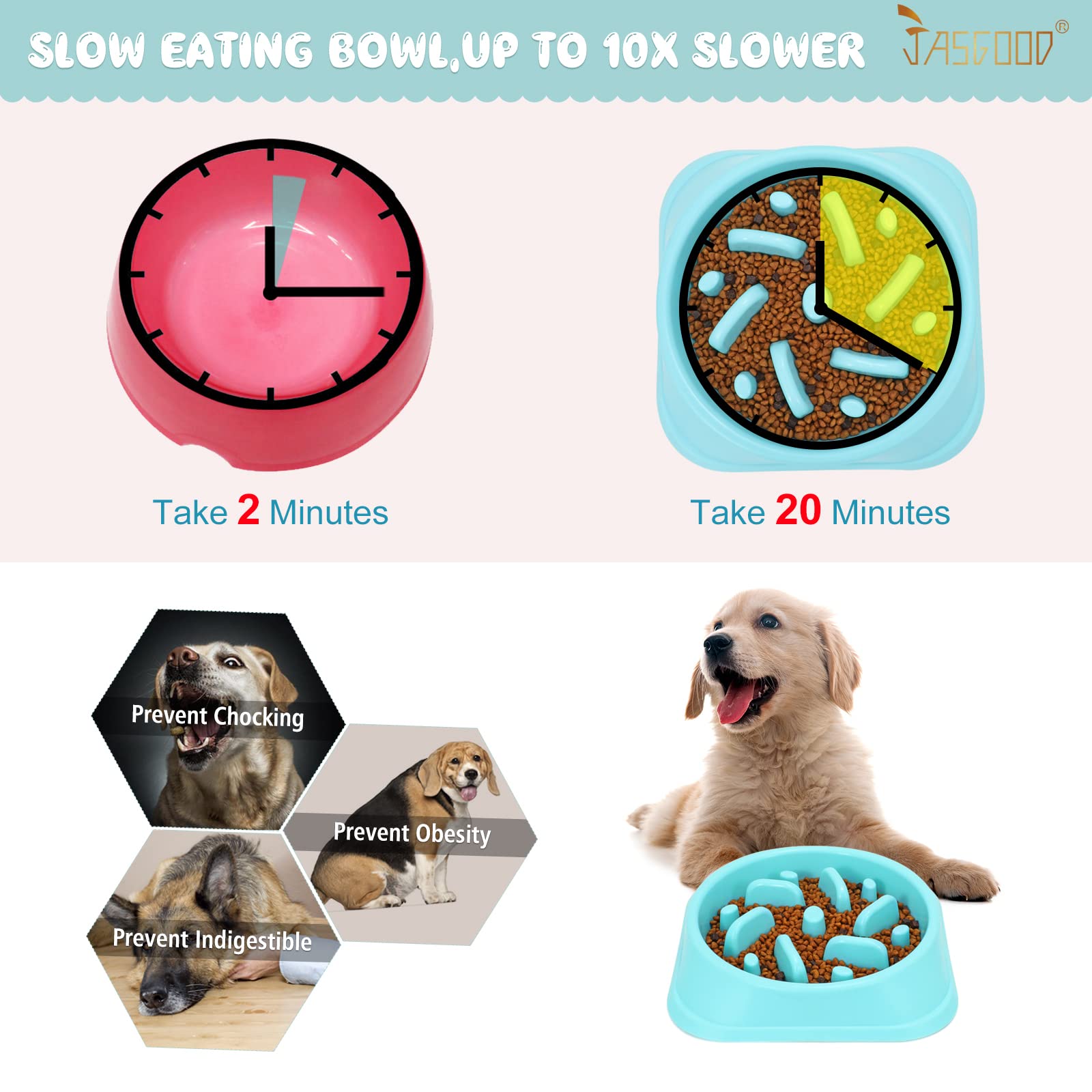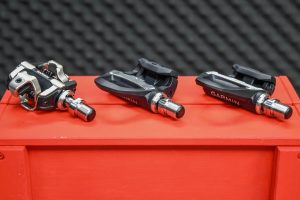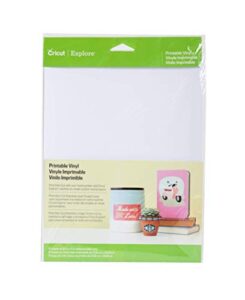Contents
- What is a Slow Feed Dog Bowl?
- Promoting Healthy Eating Habits for Your Pet
- Introducing Your Dog to a Slow Feed Dog Bowl
- Tips for Using a Slow Feed Dog Bowl Effectively
- Addressing Specific Eating Issues
- Alternatives to Slow Feed Dog Bowls
- Maintaining a Healthy Diet Overall
- FAQs about Slow Feed Dog Bowls
- Conclusion
Are you tired of your furry friend gobbling up their food way too quickly? Slow Feed Dog Bowl is here to help! This innovative product is designed to promote healthier eating habits for your beloved pet. With its unique design, the Slow Feed Dog Bowl encourages your dog to eat at a slower pace, reducing the risk of choking, bloating, and other digestive issues. Available at Petsmart, this bowl is a must-have for any pet owner who wants to ensure their furry friend’s well-being. Say goodbye to gulpers and hello to healthier meal times with the Slow Feed Dog Bowl!
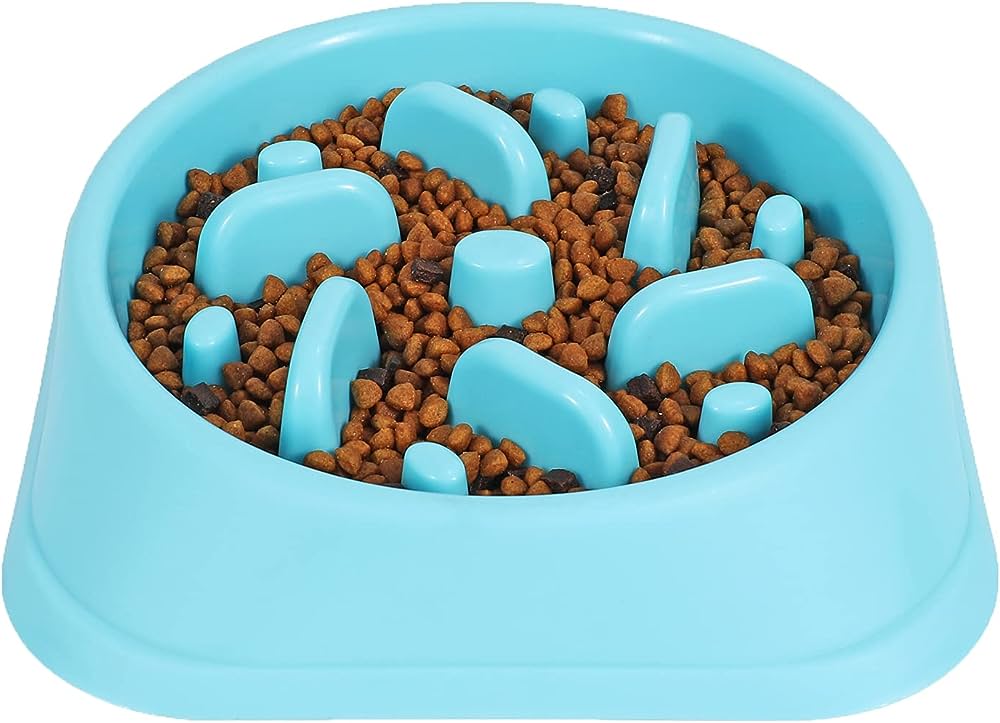
What is a Slow Feed Dog Bowl?
Definition of a Slow Feed Dog Bowl
A slow feed dog bowl is a specially designed feeding dish that encourages your dog to eat at a slower and more controlled pace. These bowls typically have obstacles or ridges inside that create barriers between the food, making it more challenging for your dog to gulp down their food quickly. By slowing down their eating, slow feed dog bowls help promote healthy digestion, reduce the risk of choking or vomiting, and prevent common eating issues in dogs.
Benefits of Using a Slow Feed Dog Bowl
Using a slow feed dog bowl can provide numerous benefits for your furry friend. Firstly, it promotes healthy eating habits by preventing your dog from inhaling their food too quickly. Eating too fast can lead to various digestive issues, such as bloating, gas, or even potentially fatal conditions like gastric torsion.
Furthermore, slow feed dog bowls can help manage your dog’s weight and prevent overeating. By slowing down their eating, dogs feel fuller with smaller portions, reducing the chances of consuming excess calories. This is especially beneficial for dogs prone to obesity or those on a weight loss program.
Additionally, slow feed dog bowls can be a useful tool for dogs with specific eating issues, such as food aggression, resource guarding, or separation anxiety-related eating problems. The obstacles in these bowls can create a barrier between the food, making it more challenging for dogs to display negative behaviors around mealtime.
Different Types of Slow Feed Dog Bowls
There is a wide variety of slow feed dog bowls available, each with its own unique design and features. Here are some of the most common types:
-
Ridge Design Bowls: These bowls have ridges or raised areas inside that force your dog to work their way around the obstacles to access their food. They typically have a wider base for stability.
-
Puzzle or Maze Bowls: These bowls feature intricate patterns or mazes, which require your dog to navigate through them to access their food. This design slows down their eating by creating a more challenging and engaging feeding experience.
-
Interactive Slow Feeders: These bowls typically have movable parts or compartments that require your dog to manipulate or solve puzzles to reach their food. This adds mental stimulation to mealtime and further extends the feeding duration.
-
Portion Control Bowls: These bowls have raised dividers or compartments that allow you to measure and control the amount of food you serve your dog. They help manage portion sizes and prevent overeating.
-
Silicone Mats or Slow Feed Mats: These mats have various patterns or shapes that create obstacles for your dog to navigate as they eat. They can be placed on any flat surface and are easy to clean.
It’s important to choose a slow feed dog bowl that suits your dog’s preferences and needs. Observing your dog’s eating habits and consulting with a veterinarian can help you make the best choice.
Promoting Healthy Eating Habits for Your Pet
Importance of Healthy Eating for Dogs
Just like humans, dogs need a balanced and nutritious diet to maintain optimal health. A healthy diet plays a crucial role in their overall well-being, from their physical condition to their immune system and energy levels. By promoting healthy eating habits, you can ensure that your dog receives all the essential nutrients they need to thrive.
Common Eating Issues in Dogs
Unfortunately, many dogs struggle with common eating issues that can negatively impact their health. Some of the most frequent problems include:
-
Gulping or Choking: Some dogs tend to eat their food quickly and swallow large chunks without properly chewing. This can lead to choking or digestive issues.
-
Scarffing or Vomiting: Dogs that eat too fast may also have a higher chance of regurgitating or vomiting their food. This can be due to the large amount of air they swallow along with their food.
-
Food Aggression or Resource Guarding: Some dogs may exhibit aggressive behaviors around food, especially when they feel a need to protect their meal from other pets or people.
-
Separation Anxiety-Related Eating Issues: Dogs with separation anxiety may have difficulty eating or lose their appetite completely when left alone. This can be a challenging issue for both the dog and their owner.
-
Weight Management Challenges: Overeating and rapid consumption of food can contribute to weight gain and obesity in dogs, which can lead to various health problems, including joint issues, diabetes, and heart disease.
Role of Slow Feed Dog Bowls in Promoting Healthy Eating
Slow feed dog bowls can be an effective solution to these common eating issues. By forcing your dog to eat at a slower pace and have to work for their food, these bowls address the root causes of many eating problems.
By preventing gulping or choking, slow feed dog bowls encourage dogs to chew their food properly, reducing the risk of digestive problems. They also help prevent scarffing or vomiting by minimizing the amount of air swallowed along with the food.
For dogs with food aggression or resource guarding behaviors, slow feed dog bowls create a more controlled and calm feeding environment. The obstacles in these bowls can help alleviate their anxiety and prevent conflicts around mealtime.
Furthermore, slow feed dog bowls can aid in managing weight by slowing down eating and promoting a sense of fullness with smaller portions. This can help prevent overeating and contribute to a healthy weight management plan.
How Slow Feed Dog Bowls Work
Slow feed dog bowls work by creating obstacles or barriers that slow down your dog’s eating speed. These obstacles can be in the form of ridges, mazes, or compartments, which require your dog to navigate around them to access their food.
By making it more challenging for your dog to reach their food, slow feed dog bowls extend the duration of mealtime. This not only promotes better digestion but also gives their brain a chance to register the feeling of fullness, reducing the likelihood of overeating.
The design of slow feed dog bowls engages your dog’s natural foraging instincts. Dogs are instinctively motivated to explore and search for their food, and slow feed dog bowls tap into this behavior by turning mealtime into a mentally stimulating activity.
Features to Look for in a Slow Feed Dog Bowl
When choosing a slow feed dog bowl for your pet, there are several key features to consider:
-
Consider Your Dog’s Size and Breed: Different breeds and sizes of dogs have different eating habits and preferences. Make sure to choose a bowl that is suitable for your dog’s size, with the right depth and width to accommodate their snout without causing discomfort.
-
Material and Durability: Opt for bowls made from sturdy and non-toxic materials that can withstand daily use. Stainless steel and FDA-approved plastic are popular choices.
-
Ease of Cleaning: Look for bowls that are easy to clean, preferably dishwasher-safe. Some slow feed dog bowls have detachable parts or are designed for easy disassembly, making the cleaning process more convenient.
-
Design and Stability: Consider the stability of the bowl, especially if your dog tends to knock their bowl over. Choose a bowl with a non-slip base or look for options that can be attached to the floor or have suction cups for added stability.
-
Budget-Friendly Options: Slow feed dog bowls come in various price ranges. While it’s important to invest in a quality bowl, there are affordable options available that still offer the desired functionality and durability.
-
Consulting a Veterinarian for Recommendations: If your dog has specific health conditions or dietary needs, it’s always a good idea to consult with your veterinarian for recommendations on the best type of bowl for your pet.
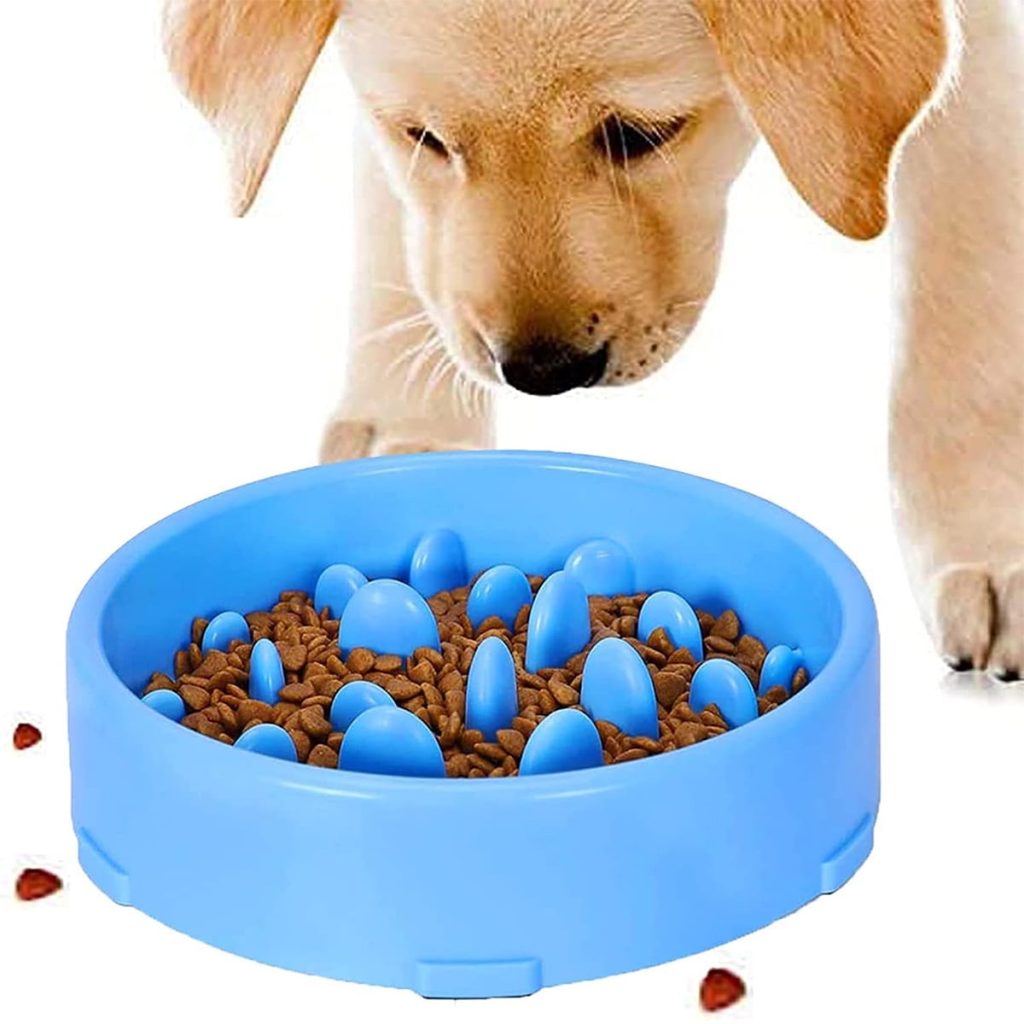
Introducing Your Dog to a Slow Feed Dog Bowl
Gradual Transition
When introducing your dog to a slow feed dog bowl, it’s important to make the transition gradual. Suddenly changing their feeding routine or serving their food in a completely different type of bowl may confuse or frustrate them.
Start by mixing a small portion of their regular food with some treats or kibble, and place it in the slow feed dog bowl. This way, they will associate the new bowl with positive experiences and rewards. Over time, gradually increase the amount of food in the slow feed bowl until they are fully transitioned.
Positive Reinforcement
Using positive reinforcement techniques can help your dog associate the slow feed dog bowl with a rewarding experience. Praise and reward your dog when they successfully eat from the bowl, and offer verbal encouragement throughout the process.
Consider using a favorite toy or engaging in a play session after they finish their meal in the slow feed bowl. This will create positive associations and reinforce the idea that the new bowl is a fun and enjoyable part of their routine.
Patience and Persistence
It may take some time for your dog to adjust to using a slow feed dog bowl, as they need to learn how to navigate the obstacles or ridges. Be patient and persistent, and avoid getting frustrated if your dog takes longer to finish their food during the initial stages.
Always remember that the goal is to promote healthier eating habits, and it may take a few weeks for your dog to fully adapt to the new bowl. Stay consistent with the transition process and provide the necessary support and encouragement along the way.
Monitoring Your Dog’s Progress
Keep a close eye on your dog’s progress as they adjust to the slow feed dog bowl. Observe their eating speed and behaviors to ensure that they are comfortable and not experiencing any difficulties.
If you notice any signs of stress, frustration, or other negative behaviors, it may be helpful to seek professional help from a dog trainer or behaviorist. They can provide guidance and assistance in ensuring a smooth transition to the slow feed dog bowl.
Seeking Professional Help if Needed
In some cases, dogs may have underlying health issues or behavioral challenges that require professional intervention. If your dog continues to have difficulty adjusting to the slow feed dog bowl or if their eating issues persist, it is important to consult with a veterinarian or a qualified dog behaviorist.
These professionals can assess your dog’s specific needs and provide tailored guidance to address their unique challenges. Remember, every dog is different, and what works for one may not work for another. Professional help can make a significant difference in helping your dog overcome any eating issues they may have.
Tips for Using a Slow Feed Dog Bowl Effectively
Establish a Routine
Establishing a consistent feeding routine is essential when using a slow feed dog bowl. Set regular meal times and stick to them as closely as possible. Dogs thrive on routine and predictability, and having a consistent schedule will help them adapt to the new feeding method.
Correct Portion Control
Take the time to measure your dog’s food portions accurately based on their size and dietary requirements. Slow feed dog bowls are designed to slow down eating, but it’s still important to provide them with the right amount of food for their nutritional needs.
Consult with your veterinarian to determine the appropriate portion sizes for your dog, taking into account their age, weight, activity level, and any underlying health conditions. Avoid overfeeding, as this can lead to weight gain and other health issues.
Monitoring the Feeding Time
Observing your dog’s eating habits is crucial, especially during the initial stages of using a slow feed dog bowl. Note the duration it takes for them to finish their meal and ensure that they are not spending an excessive amount of time to eat.
If your dog consistently takes an unusually long time to finish their food or shows signs of disinterest, consult with your veterinarian. It may be an indication of an underlying medical condition or an issue with the slow feed bowl itself.
Ensuring Proper Hydration
While slow feed dog bowls can help manage the speed of your dog’s eating, it’s important to ensure they have access to fresh water at all times. Slow feed bowls may extend mealtime, but dogs still need to stay hydrated. Make sure to provide a separate water bowl and encourage your dog to drink water regularly.
Avoiding Overfeeding
Although slow feed dog bowls can aid in portion control, it’s still important to avoid overfeeding your pet. Follow feeding guidelines provided by your veterinarian or pet food manufacturer to ensure that you are giving your dog the right amount of food to maintain a healthy weight.
Overfeeding can lead to obesity, which can have serious implications for your dog’s overall health. If you are unsure about portion sizes or have concerns about your dog’s weight, consult with your veterinarian for guidance.
Combining Slow Feed Bowls with Interactive Toys
To add an extra mental and physical challenge to your dog’s feeding routine, consider combining the use of slow feed dog bowls with interactive toys. Puzzle feeders or treat-dispensing toys can provide additional stimulation and entertainment, making mealtime more enriching for your dog.
These toys can be filled with your dog’s regular kibble or treats and require them to problem-solve and work for their food. This combination of mental and physical activity can help keep your dog engaged and satisfied, both physically and mentally.
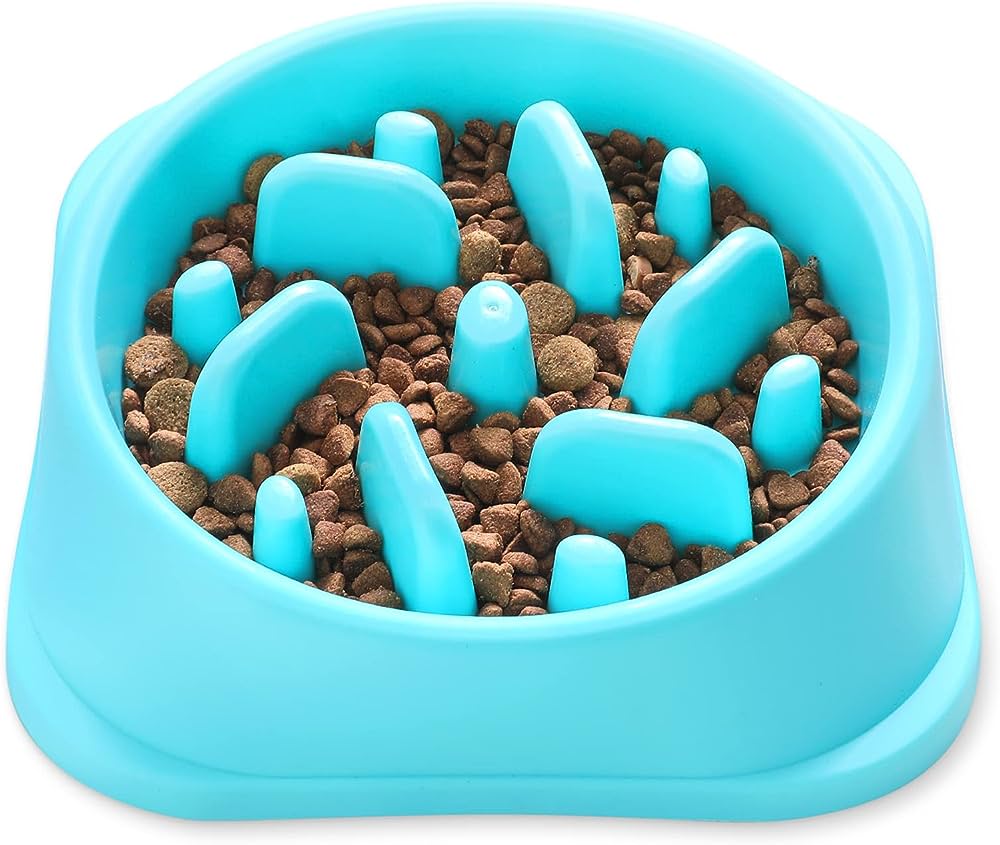
Addressing Specific Eating Issues
Gulping or Choking
If your dog tends to gulp down their food and is at risk of choking or other digestive issues, a slow feed dog bowl can be beneficial. The obstacles in the bowl force them to slow down their eating pace, ensuring that they chew their food properly and reducing the risk of choking.
Additionally, you can consider feeding smaller, more frequent meals throughout the day to prevent your dog from feeling excessively hungry and rushing their meals. This approach, combined with a slow feed dog bowl, can help address gulping or choking issues.
Scarffing or Vomiting
Dogs that scarff down their meals quickly may be more prone to regurgitating or vomiting their food. Slow feed dog bowls can help minimize these issues by slowing down their eating pace and reducing the amount of air swallowed along with the food.
If scarffing or vomiting continues to be a problem, consult with your veterinarian to rule out any underlying health conditions that may be contributing to these issues. Adjusting your dog’s feeding schedule or the type of food they eat may also help alleviate these problems.
Food Aggression or Resource Guarding
Slow feed dog bowls can be particularly useful for dogs with food aggression or resource guarding behaviors. The obstacles in these bowls create a more controlled and interactive feeding experience, reducing the likelihood of conflict or aggressive behavior around mealtime.
However, it’s important to address the root causes of these behaviors through proper training and behavior modification. Consult with a professional dog trainer or behaviorist to develop a tailored plan to address food aggression or resource guarding in conjunction with using a slow feed dog bowl.
Separation Anxiety-Related Eating Issues
Dogs with separation anxiety may have difficulty eating or lose their appetite completely when left alone. Slow feed dog bowls can provide a more engaging feeding experience, helping to distract and reduce their anxiety during mealtime.
If your dog’s separation anxiety-related eating issues persist, it’s essential to address the underlying anxiety itself. Consult with a veterinarian or a certified dog behaviorist to develop a comprehensive plan to manage their separation anxiety and create a positive association with mealtime.
Weight Management Challenges
If your dog is overweight or prone to weight gain, slow feed dog bowls can be an effective tool in managing their weight. By slowing down their eating and promoting a sense of fullness with smaller portions, these bowls can contribute to a healthy weight management plan.
However, it’s important to combine the use of a slow feed dog bowl with a balanced and portion-controlled diet. Consult with your veterinarian to develop a weight management plan that includes appropriate food choices, portion sizes, and exercise routines tailored to your dog’s specific needs.
Alternatives to Slow Feed Dog Bowls
While slow feed dog bowls can be incredibly helpful, they may not be suitable for every dog or every situation. Here are some alternatives to consider:
Puzzle Feeders and Interactive Toys
Puzzle feeders and interactive toys can provide mental stimulation and extend mealtime for dogs. These toys require dogs to solve puzzles or manipulate certain parts to access their food. They can be a great alternative to slow feed dog bowls, especially for dogs who prefer a more interactive feeding experience.
Feeding Mats and Food Dispensing Toys
Feeding mats and food dispensing toys can offer a different way to slow down your dog’s eating. These mats have various patterns or shapes that can create obstacles for your dog, similar to slow feed dog bowls. Food dispensing toys, such as Kong toys, can be filled with your dog’s food, creating a mentally stimulating and prolonged feeding experience.
Food Dispensing Balls
Food dispensing balls are another option to extend mealtime and slow down your dog’s eating pace. These balls have small holes that dispense pieces of kibble as the dog rolls the ball around. This encourages physical activity while also making the feeding process more engaging.
DIY Slow Feeders
If you’re feeling creative, you can create your own DIY slow feeders using household items. For example, you can scatter your dog’s kibble in a grassy area of your yard or place small portions of food in various hiding spots around your home. These DIY solutions can provide mental stimulation and slow down your dog’s eating without the need for a specific slow feed dog bowl.
Training and Behavior Modification
In some instances, addressing eating issues may require more than just the use of a slow feed dog bowl. Consult with a professional dog trainer or behaviorist to develop a training and behavior modification plan that addresses the underlying causes of your dog’s eating issues. With professional guidance, you can work towards resolving these issues and promoting healthier eating habits for your pet.
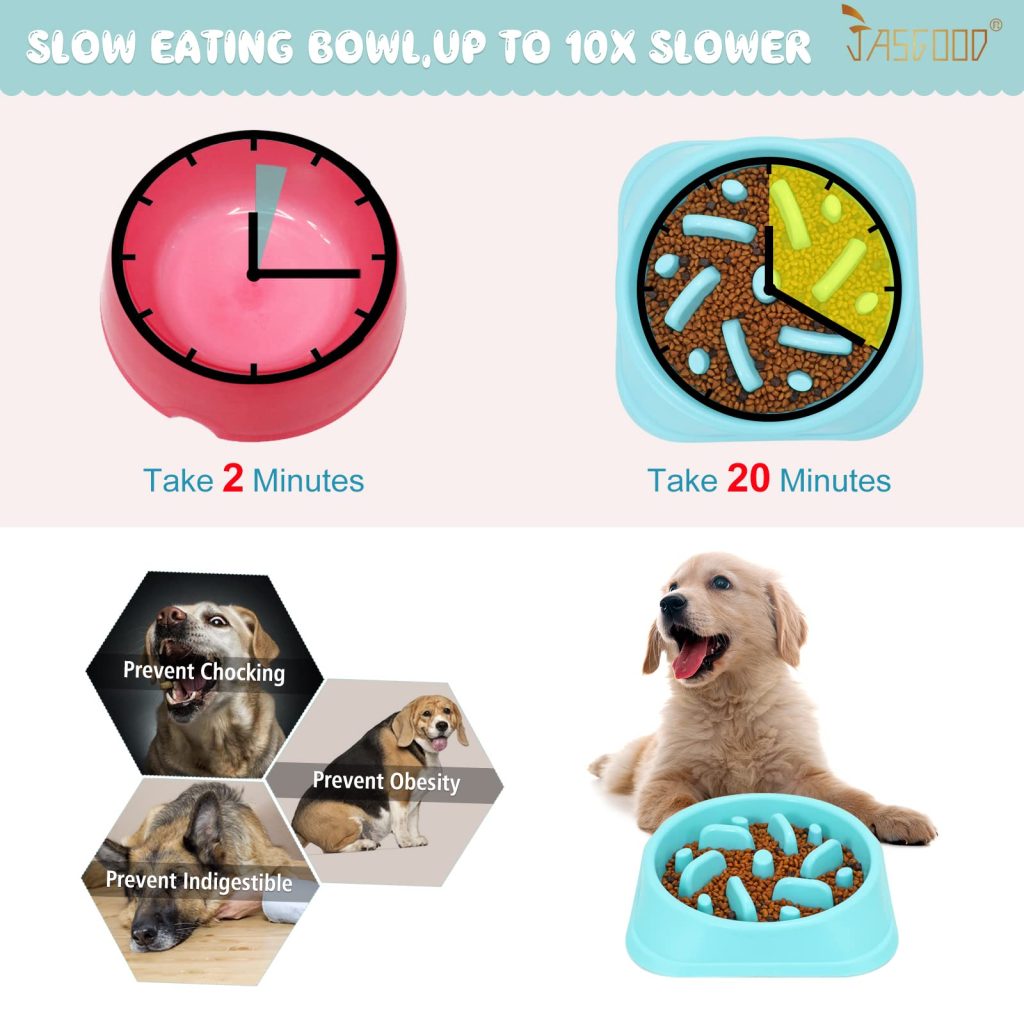
Maintaining a Healthy Diet Overall
Balanced Nutrition for Dogs
Maintaining a healthy diet for your dog goes beyond just the feeding method. It’s important to provide them with a balanced and nutritious diet that meets their specific nutritional needs.
Consult with your veterinarian to determine the appropriate type of food, portion sizes, and frequency of feeding for your dog. Consider factors such as their age, size, breed, activity level, and any underlying health conditions when choosing the right diet for your furry friend.
Special Dietary Requirements
Some dogs may have specific dietary requirements due to allergies, sensitivities, or underlying health conditions. If your dog requires a special diet, it’s essential to follow your veterinarian’s recommendations and choose the appropriate food that meets their specific needs.
Avoid giving your dog human food or table scraps, as this can lead to nutritional imbalances and other health issues. Stick to a diet that is specifically formulated for dogs and meets all their nutritional requirements.
Avoiding Human Food
While it may be tempting to share your food with your furry friend, it’s important to avoid giving them human food. Many common human foods are toxic to dogs and can lead to serious health problems, including kidney failure, pancreatitis, or even death.
Certain foods, such as chocolate, onions, grapes, and avocados, can be highly toxic to dogs. It’s crucial to educate yourself about the foods that are safe and unsafe for dogs and to resist the temptation to share your meals with them.
Healthy Treat Options
Treats can be a valuable part of your dog’s diet, but it’s important to choose healthy options that complement their regular meals. Opt for treats that are low in calories and made from natural and nutritious ingredients. Many pet stores offer a wide selection of healthy treats that are specifically formulated for dogs.
Remember to use treats in moderation and consider them as part of your dog’s overall calorie intake. Overfeeding treats can contribute to weight gain and other health problems.
Regular Veterinary Check-ups
Regular veterinary check-ups are essential for maintaining your dog’s overall health and detecting any potential issues early on. Your veterinarian can assess your dog’s weight, body condition, and nutritional needs, and provide recommendations for their diet and feeding routine.
During check-ups, your veterinarian may also perform blood tests or recommend specific dietary supplements if necessary. These check-ups play a crucial role in ensuring that your dog receives the appropriate care and maintains a healthy diet over time.
FAQs about Slow Feed Dog Bowls
Are Slow Feed Dog Bowls Suitable for all Dogs?
Slow feed dog bowls can be suitable for most dogs, regardless of their size or breed. However, it’s important to choose the right type of slow feed dog bowl that suits your dog’s preferences and eating habits.
For example, dogs with short snouts, such as bulldogs or pugs, may prefer a slow feed bowl with wider openings or shallower obstacles. On the other hand, larger dogs might require a bowl with deeper ridges or more challenging mazes to slow down their eating pace.
How Long Should I Use a Slow Feed Dog Bowl?
The duration of using a slow feed dog bowl can vary depending on your dog’s specific needs and preferences. Some dogs may adapt quickly and show significant improvements in their eating habits within a few weeks, while others may take longer to adjust.
It’s ultimately up to you and your veterinarian to determine how long you should continue using a slow feed dog bowl. It may be a permanent fixture in your dog’s feeding routine or a temporary solution to address specific issues.
Can Slow Feed Dog Bowls Help with Weight Loss?
Yes, slow feed dog bowls can be an effective tool for managing weight loss in dogs. By slowing down their eating pace and promoting a sense of fullness with smaller portions, these bowls can help prevent overeating and aid in calorie control.
However, it’s important to combine the use of a slow feed dog bowl with a well-balanced diet and regular exercise. Consult with your veterinarian to develop a comprehensive weight loss plan that includes appropriate portion sizes, food choices, and exercise routines tailored to your dog’s specific needs.
Are Slow Feed Dog Bowls Dishwasher Safe?
Many slow feed dog bowls are dishwasher safe, but it’s always important to check the manufacturer’s instructions before placing them in the dishwasher. Some bowls may need to be hand-washed or have certain parts that should not be exposed to high temperatures.
Regular cleaning and proper hygiene are essential when using any type of dog bowl or feeding equipment. Make sure to clean the slow feed dog bowl thoroughly after each use to prevent the buildup of bacteria or residue.
Can I Use a Regular Bowl as a Slow Feed Dog Bowl?
While a regular bowl can slow down your dog’s eating to some extent, it may not provide the same level of effectiveness as a designated slow feed dog bowl. Regular bowls do not have the same obstacles or design features that are specifically intended to promote slower eating.
If you are concerned about your dog’s eating speed or need to address specific eating issues, it’s recommended to invest in a slow feed dog bowl. These bowls are designed to target the root causes of rapid eating and provide a more controlled and beneficial feeding experience for your dog.
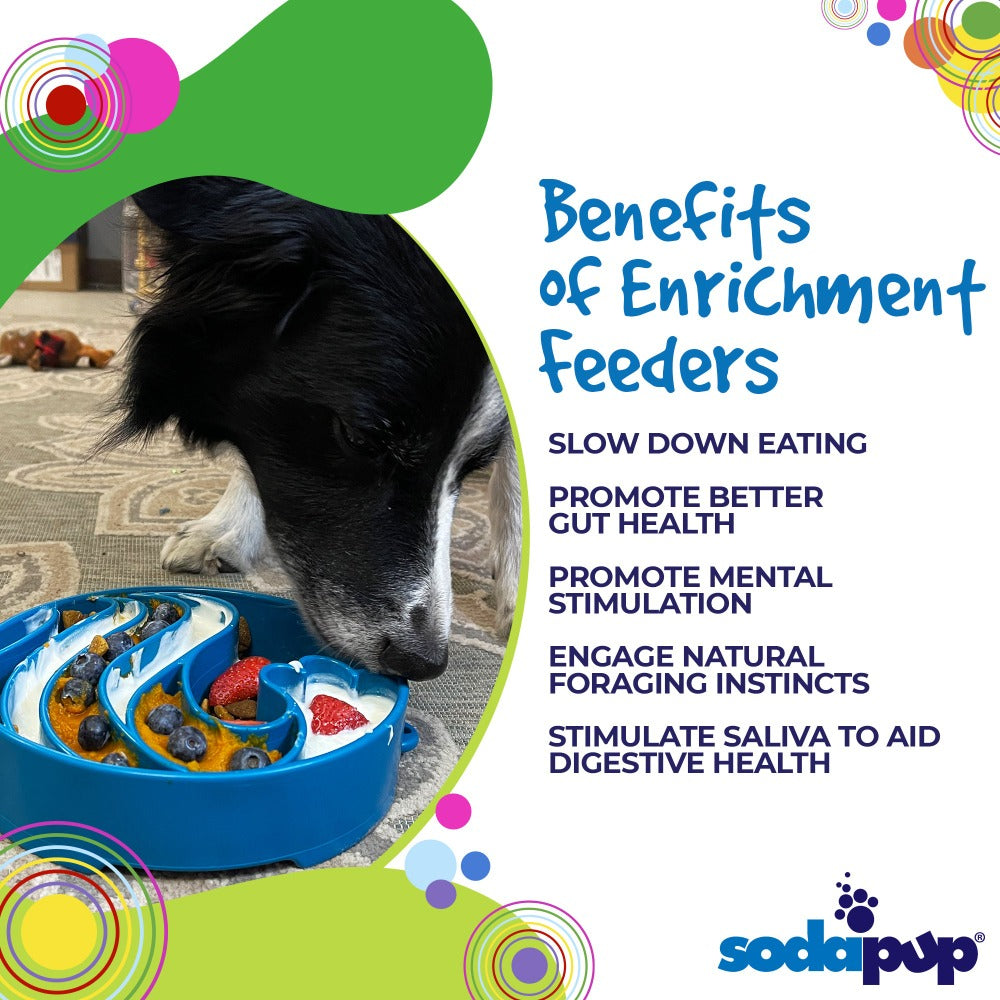
Conclusion
A slow feed dog bowl can be a valuable tool in promoting healthy eating habits for your furry friend. By slowing down their eating, these bowls help prevent common issues such as gulping, choking, scarffing, or vomiting. They also aid in weight management and can be beneficial for dogs with eating problems or behavioral challenges.
When choosing a slow feed dog bowl, consider your dog’s size and breed, the material and durability of the bowl, ease of cleaning, and design stability. Gradually introducing your dog to the bowl, using positive reinforcement, and being patient and persistent are key to a successful transition.
To use a slow feed dog bowl effectively, establish a routine, monitor portion sizes, and ensure proper hydration. Avoid overfeeding and consider incorporating interactive toys or puzzle feeders to enhance mealtime.
Addressing specific eating issues requires tailoring training and behavior modification techniques to your dog’s needs. There are also alternatives to slow feed dog bowls, such as puzzle feeders, DIY slow feeders, or interactive toys, that can provide mental and physical stimulation.
Maintaining a healthy diet overall involves providing balanced nutrition, following special dietary requirements, avoiding human food, and offering healthy treat options. Regular veterinary check-ups are vital for monitoring your dog’s health and ensuring their nutritional needs are met.
With the right slow feed dog bowl, proper techniques, and a balanced diet, you can promote healthy eating habits and enhance your dog’s overall well-being. Remember to consult with your veterinarian for personalized advice and recommendations to meet your dog’s specific needs.

